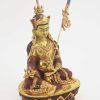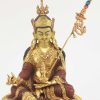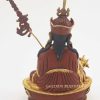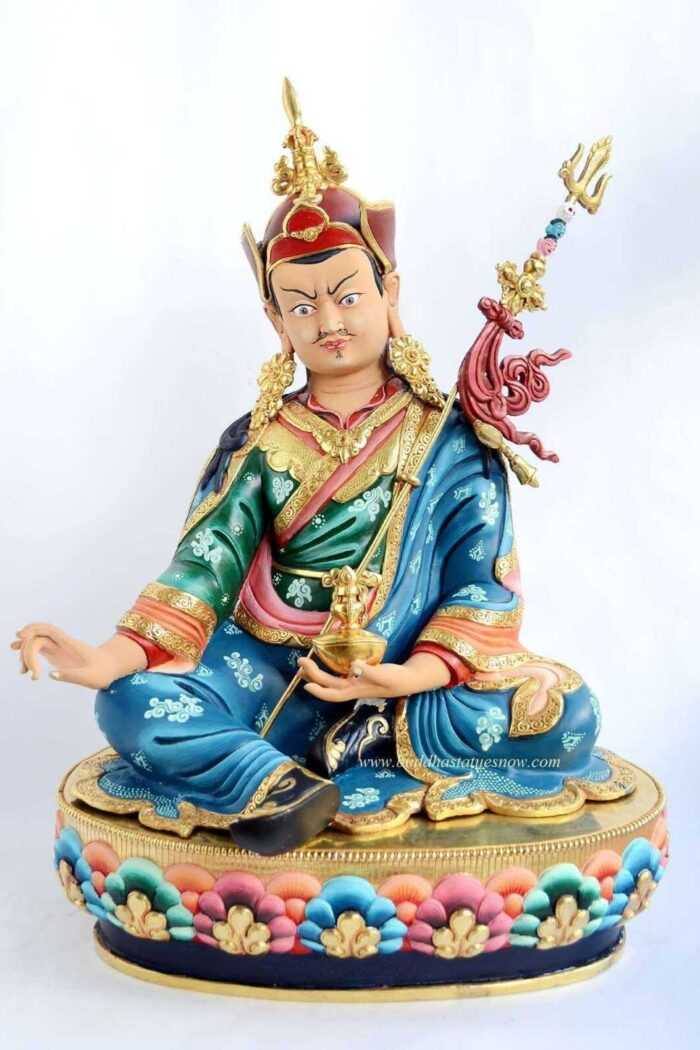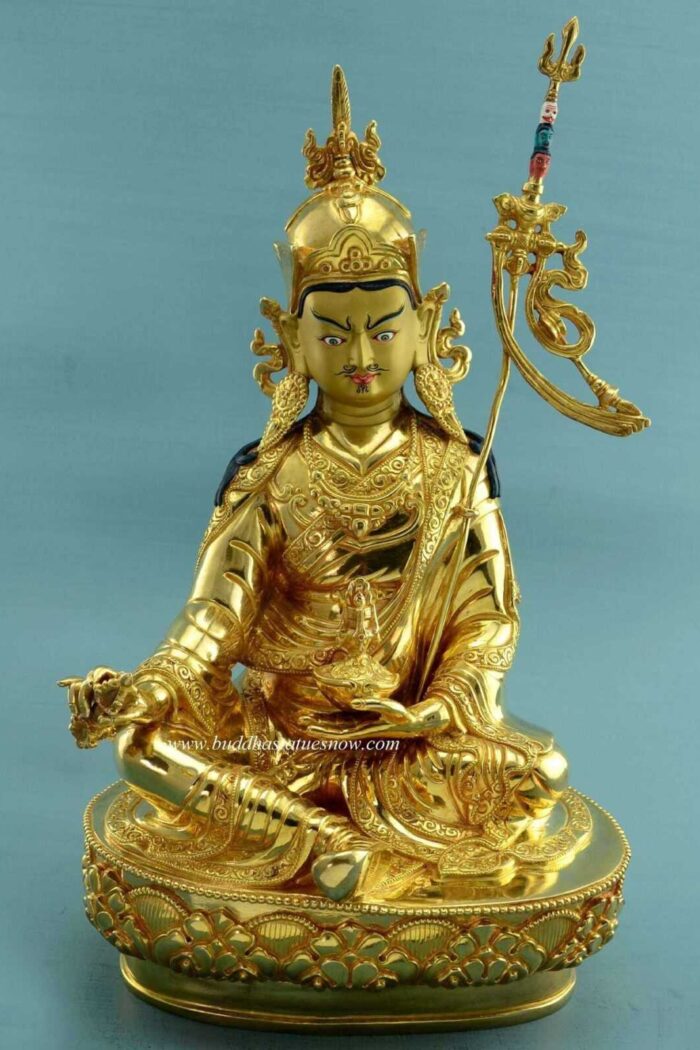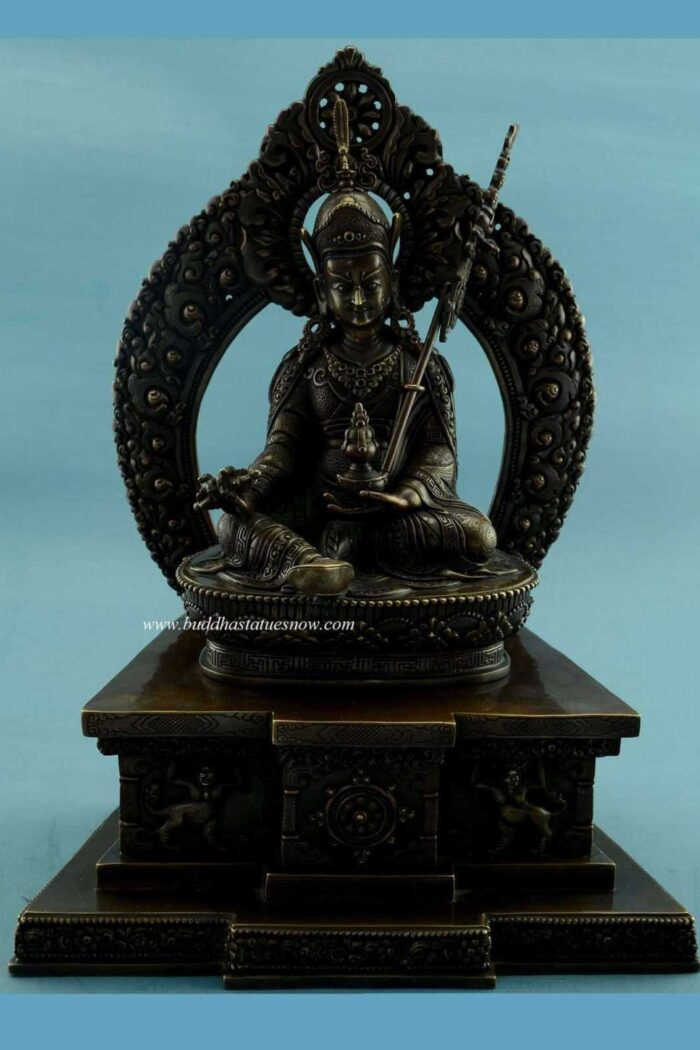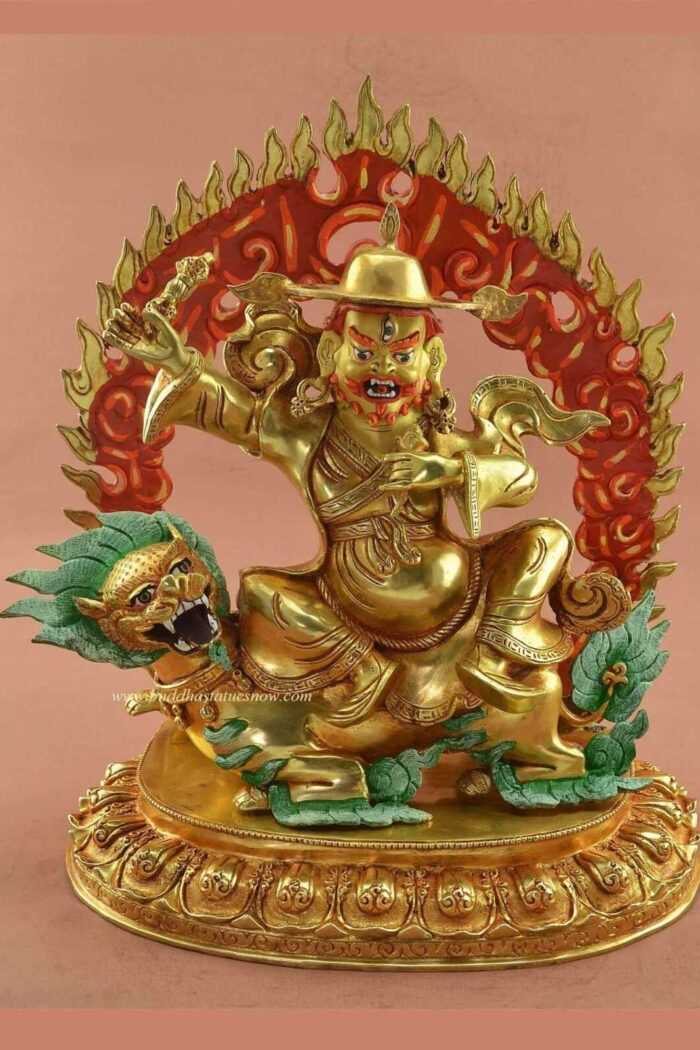This Guru Padmasambhava statue features a vulture feather on the tip of the hat symbolizing the highest view. At the request of the buyer, we can embellish the hat and jewelry of the statue with turquoise and red coral stones before delivery. As a result, your Guru Padmasambhava statue will stand out and inspire all those who see it.
Padmasambhava symbolically holds the vajra in his right hand. The word vajra means diamond or thunderbolt in Sanskrit. Indeed, this is the same symbol that the generals carried into battle in ancient India. However, spiritually it symbolizes the indestructibility of the diamond and the unstoppable force of the thunderbolt. It is also the preferred weapon of the Vedic God Indra. As a result, the vajra has become associated with spiritual perseverance and indestructibility.
Our Guru Padmasambhava statue is depicted holding the khatvanga which is leaning against his left shoulder. Additionally, the khatvanga symbolizes the three worlds (Trailokya) with three impaled human heads. These 3 heads represent desire, form and formlessness. These impaled symbols reflect the total liberation to be obtained through spiritual realization.
Furthermore, in the palm of his left hand he holds the elixir of eternal life in his vessel of immortality. Additionally, the immortality vessel rests inside the kapala skull cup.
Guru Padmasambhava Statue History:
Padmasambhava translates as “lotus born” in Pali, additionally, the origins of Padmasambhava are mythical but they also have historical significance. The mystical location of his birth was called the “Land of the Dakinis”, also known as Oddiyana. Our Guru Padmasambhava statue depicts the founder of the first Tibetan Buddhist tradition known as – Nyingma.
Guru Padmasambhava was initially invited to Tibet by Santaraksita in the 8th century to assist with construction of Tibet’s first Buddhist monastery at Samye. However, the Tibetan King was influenced by the Tantric teachings of Guru Padmasambhava, so much so, that the Guru’s Tantric method became the national religion of Tibet. As a result, Guru Padmasambhava became the father of Tibetan Buddhism and his followers believe he is the second Buddha of our time. The first Buddha in our kalpa was the self taught Shakyamuni Buddha who revealed the original Dharma. Click here to learn more about the origin of Tibetan Buddhism.




